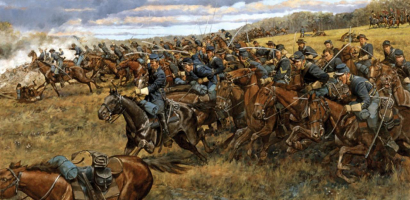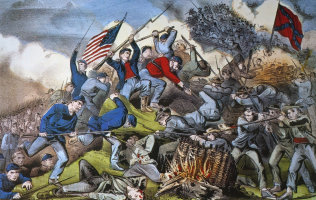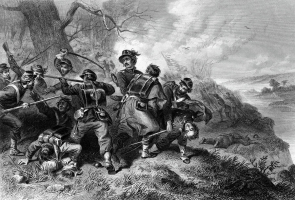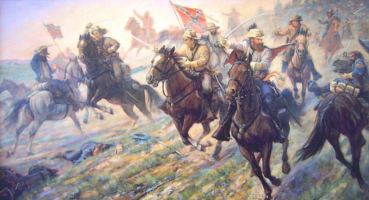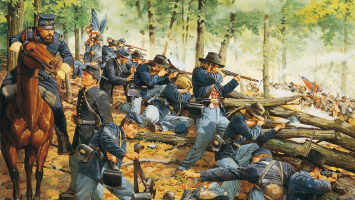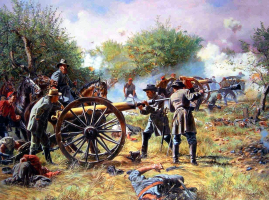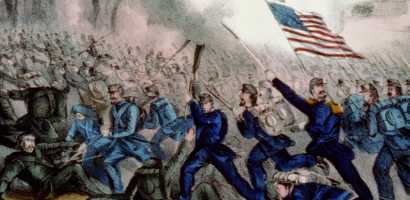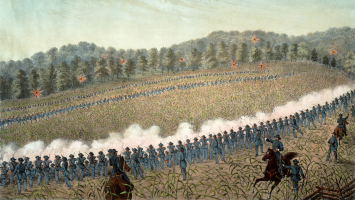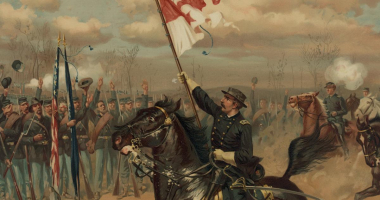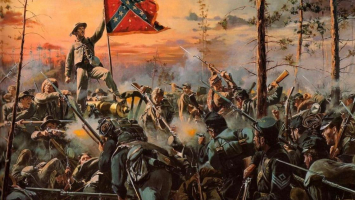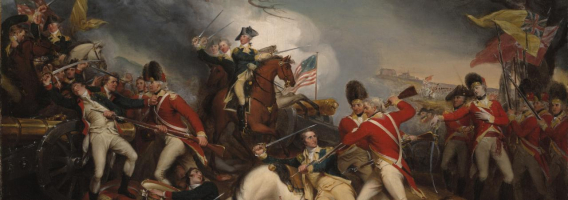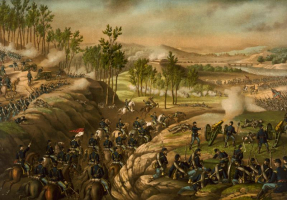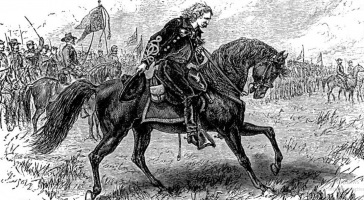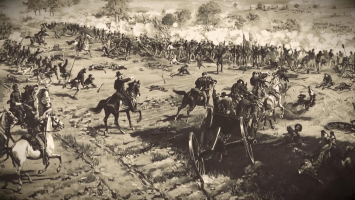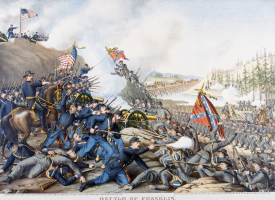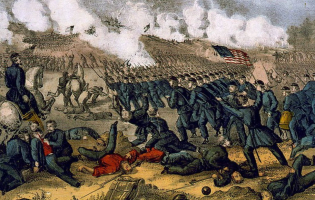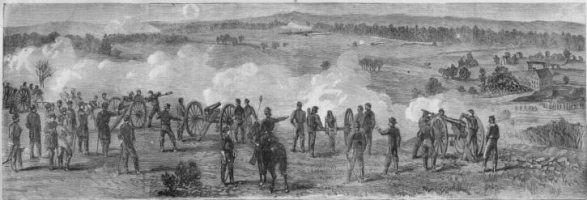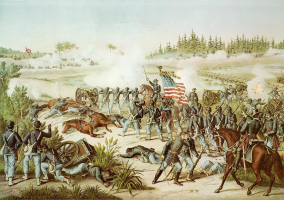Top 8 Facts About The Battle of Gettysburg
The Battle of Gettysburg (July 1-3, 1863) was a key battle in the American Civil War that took place 35 miles southwest of Harrisburg, Pennsylvania, and ... read more...resulted in a catastrophic Southern loss. It is widely recognized as the turning point of the war and has possibly been studied and analyzed more thoroughly than any other battle in American history. Here are some interesting facts about the Battle of Gettysburg that we compiled for you.
-
One of the most outstanding facts about the Battle of Gettysburg we want to introduce to you is that the Battle of Gettysburg was fought in and around the town of Gettysburg, Pennsylvania. During the American Civil War, Union and Confederate soldiers fought the Battle of Gettysburg in and around Gettysburg, Pennsylvania, on July 1-3, 1863. Following his victory at Chancellorsville, Virginia, Confederate leader Lee chose to concentrate his efforts on conquering the North in what he dubbed the Gettysburg Campaign. The strategy was to gain leverage in the North by compelling Northern politicians to stop fighting the war. By taking advantage of the wealth from the affluent, Northern farms, the invasion would also give some solace to war-weary Virginia.
When Lee pushed into Pennsylvania, his cavalry was on a raid, so he was unaware that the Union army had already arrived at Gettysburg. Both the Confederate and Union armies were aiming for a specific road junction near Gettysburg, which resulted in a clash between the two armies. Determined to crush the Union army, Lee opted to concentrate his forces there right away, while the Union continued to deploy reinforcements, resulting in a three-day struggle.
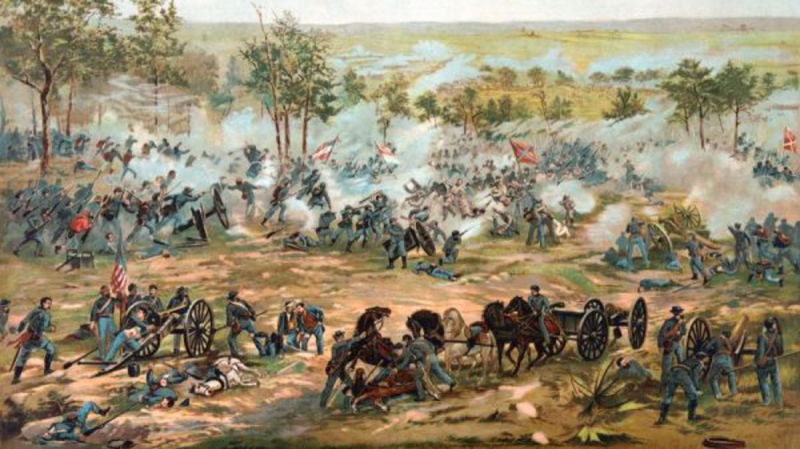
history.com 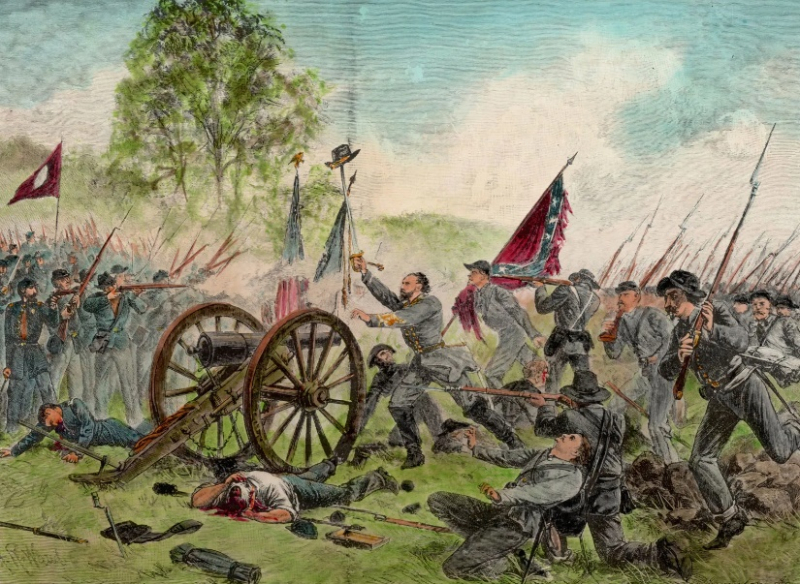
britannica.com -
It is a fact that the combat on the First Day was far larger than is commonly depicted. The first day of the American Civil War, July 1, 1863, began with a confrontation between isolated forces of the Army of Northern Virginia led by Confederate General Robert E. Lee and the Army of the Potomac led by Union Maj. Gen. George G. Meade. It quickly grew into a massive fight, with the outnumbered and defeated Union forces retiring to the high ground south of Gettysburg, Pennsylvania.
As warriors began to arrive on the battlefield, the first day of fighting unfolded in three stages. Two brigades of Confederate Maj. Gen. Henry Heth's division (of Lt. Gen. A.P. Hill's Third Corps) were held up in the morning by dismounted Union cavalrymen led by Brig. Gen. John Buford. The Union XI Corps, headed by Major General Oliver Otis Howard, had arrived by early afternoon, and the Union position was in a semicircle from west to north of town. Although the Union lines were under intense pressure, the salient at Barlow's Knoll was overcome.
The third phase of the combat began when Rodes repeated his attack from the north and Heth returned from the west with his entire division, accompanied by Maj. Gen. W. Dorsey Pender's division. The Union line was finally breached after heavy fighting in Herbst's Woods and on Oak Ridge. Despite Robert E. Lee's discretionary orders to take the heights if practicable, Richard Ewell chose not to attack.
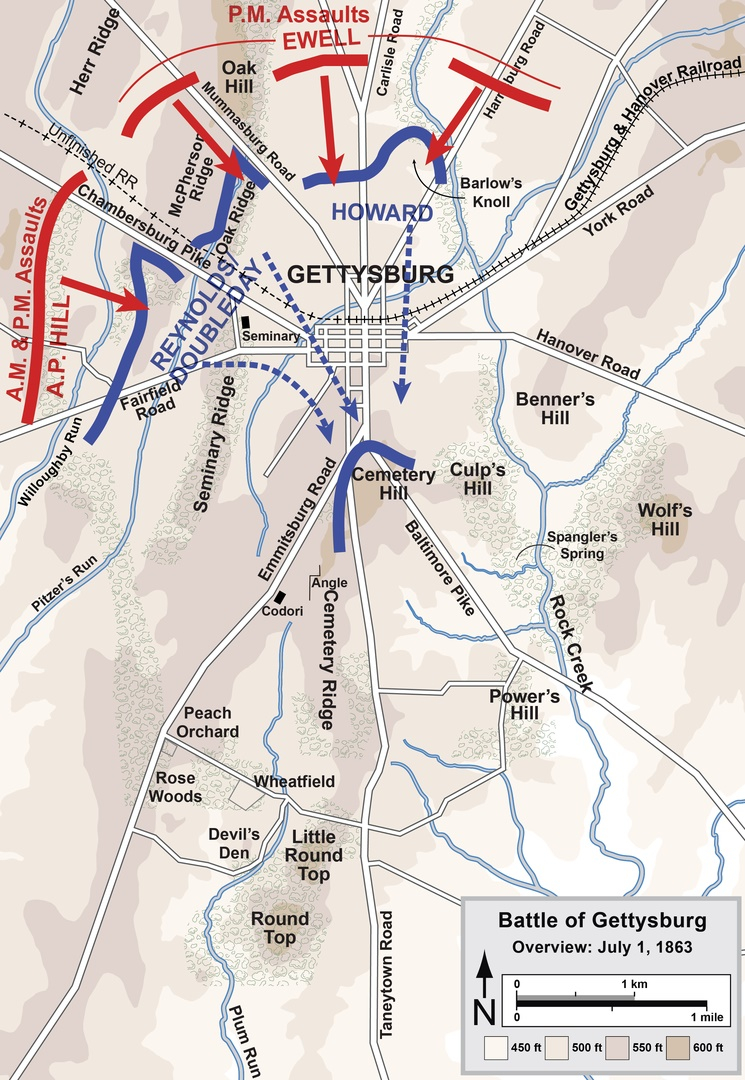
Overview of the first day -en.wikipedia.org 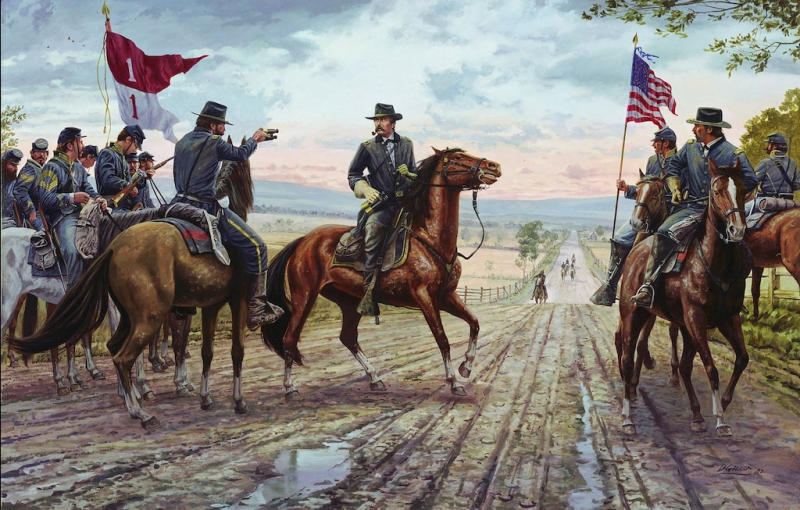
http://jjwargames.blogspot.com/ -
One of the most outstanding facts about the Battle of Gettysburg is that the battle on the second day was the largest and most expensive of the three. Confederate Gen. Robert E. Lee attempted to capitalize on his first day's victory during the second day of the Battle of Gettysburg (July 2, 1863). His Army of Northern Virginia conducted a series of flanking attacks on the Union Army of the Potomac, led by Maj. Gen. George G. Meade. The assaults were unsuccessful, and both sides suffered severe casualties.
Lt. Gen. James Longstreet launched an attack with his First Corps on the Union left flank. His division, led by Maj. Gen. John Bell Hood launched an attack on Little Round Top and Devil's Den. Maj. Gen. Lafayette McLaws attacked the Wheatfield and the Peach Orchard to Hood's left. Despite the fact that neither side won, the Union III Corps was effectively defeated. To repel these furious assaults, Gen. Meade rushed up to 20,000 reinforcements from elsewhere in his line.
Lt. Gen. Richard S. Ewell, commander of the Confederate Second Corps, turned protests against the Union right flank into full-scale assaults on Culp's Hill and East Cemetery Hill that evening, but both were rebuffed. The Union army had taken solid defensive positions, and Meade controlled his forces efficiently, resulting in high losses for both sides but largely identical force dispositions on both sides. Lee's hopes of defeating the Army of the Potomac on Northern territory were thwarted, but he began planning for the third day.
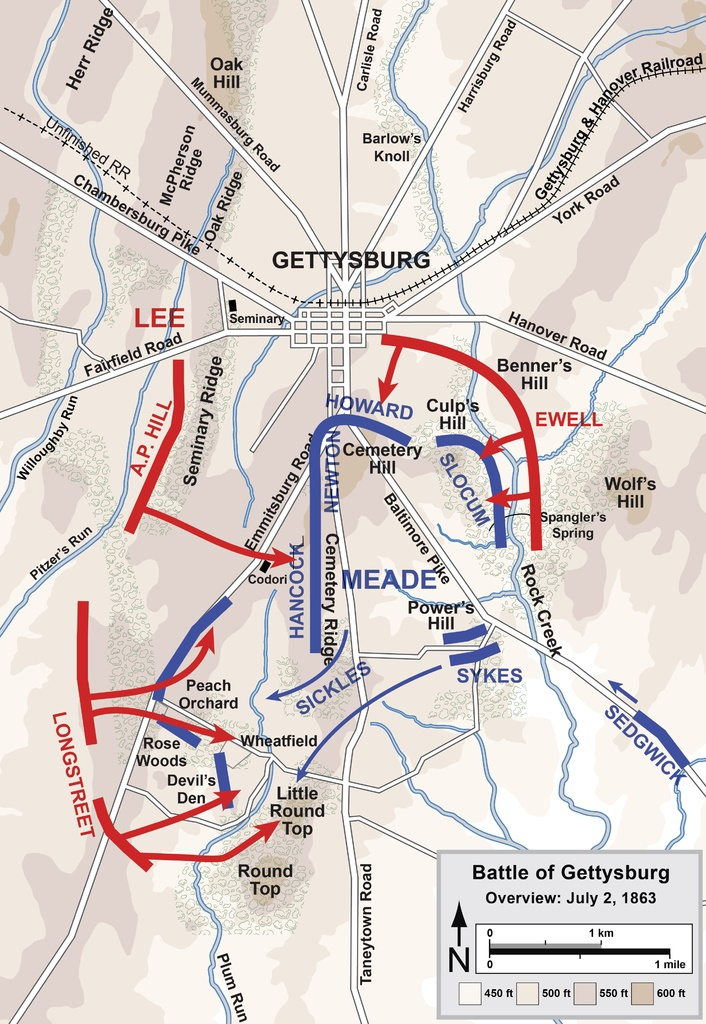
Map of battle, July 2 -en.wikipedia.org 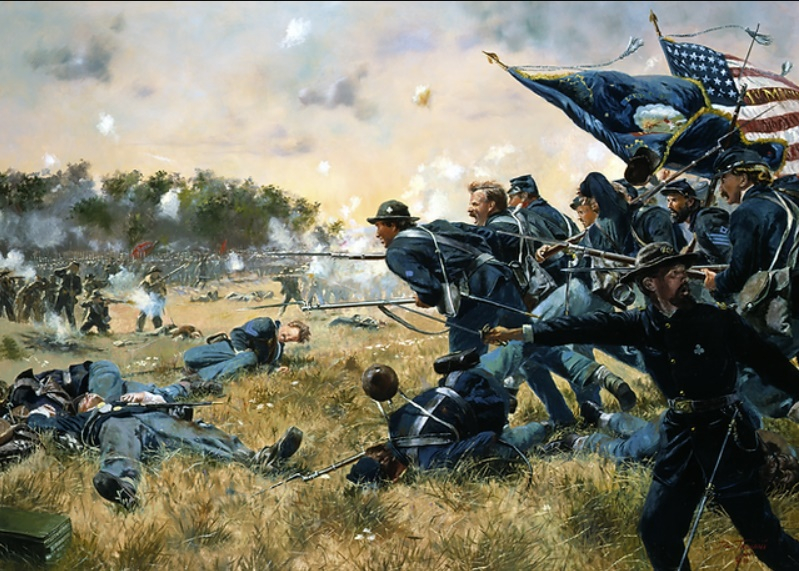
thisiswhywestand.net -
Gettysburg also witnessed a great number of generals killed in the battle. During the battle at Gettysburg, 11 generals were killed or gravely wounded. During the retreat following the engagement, the Confederacy lost generals Paul Jones Semmes, William Barksdale, William Dorsey Pender, Richard Garnett, and Lewis Armistead, as well as J. Johnston Pettigrew. Generals John Reynolds, Samuel K. Zook, Stephen H. Weed, and Elon J. Farnsworth were killed, as was Strong Vincent, who was promoted to brigadier general on his deathbed. Union Generals Dan Sickles who lost a leg, Francis C. Barlow, Daniel Butterfield, and Winfield Scott Hancock were among the other top officers wounded.
Major General John Bell Hood of the Confederacy lost the use of his left arm, while Major General Henry Heth was wounded in the head on the first day of battle though incapacitated for the rest of the battle, he remarkably survived, credited in part due to his hat stuffed full of paper dispatches. Generals James L. Kemper and Isaac R. Trimble of the Confederacy were seriously wounded during Pickett's charge and captured following the Confederate retreat. General James J. Archer, in command of a brigade that was most certainly responsible for Reynolds' death, was captured shortly after Reynolds' death.
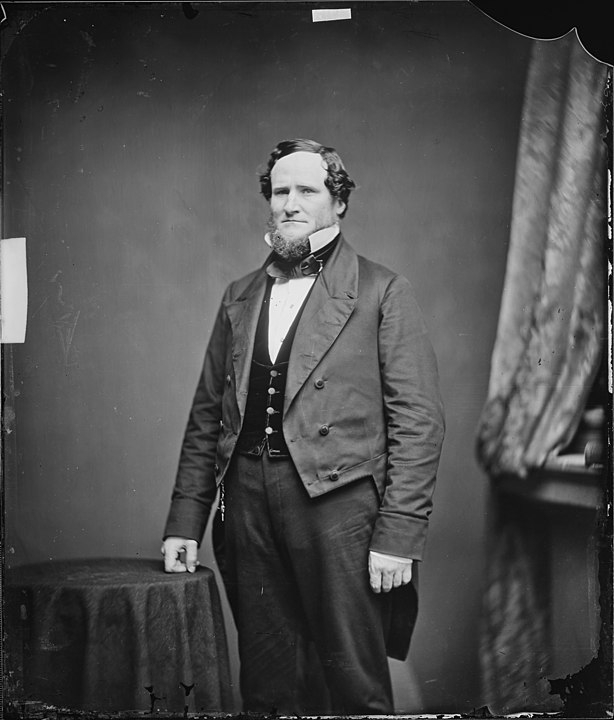
William Barksdale -en.wikipedia.org 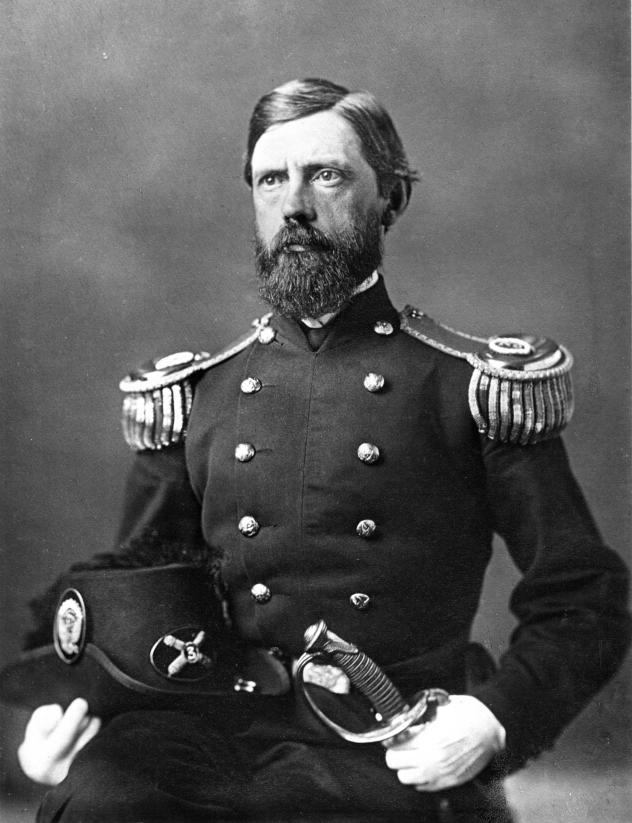
John Fulton Reynolds -en.wikipedia.org -
One of the most outstanding facts about the Battle of Gettysburg is that the Battle of Gettysburg was considered one of the bloodiest fights of the war. The two armies suffered between 46,000 and 51,000 losses, accounting for approximately one-third of all troops engaged, with the Army of the Potomac suffering 28% and the Army of Northern Virginia suffering 37%. Union casualties totaled 23,055 (3,155 killed, 14,531 wounded, and 5,369 taken or missing), whereas Confederate casualties are harder to calculate. Many authors have claimed as many as 28,000 Confederate deaths, and Busey and Martin's 2005 book, Regimental Strengths, and Losses at Gettysburg, lists 23,231 casualties (4,708 killed, 12,693 wounded, 5,830 captured or missing). Almost one-third of Lee's general commanders were killed, injured, or imprisoned. 57,225 people were killed on both sides during the campaign.
However, there was just one confirmed civilian death during the battle: Ginnie Wade, 20 years old, was hit by a stray bullet while preparing bread in her town kitchen. Another prominent civilian death was John L. Burns, a 69-year-old War of 1812 veteran who walked to the front lines on the first day of conflict and fought in intense combat as a volunteer. Burns survived the battle despite his age and injuries and lived until 1872. Nearly 8,000 people had been killed outright; the dead, which were lying under the blazing summer sun, needed to be buried as soon as possible. Over 3,000 horse carcasses were burned in a series of mounds south of town, and the stench sickened the residents. Meanwhile, Gettysburg, with a population of only 2,400 people, was tasked with caring for 14,000 injured Union forces and an extra 8,000 Confederate captives.
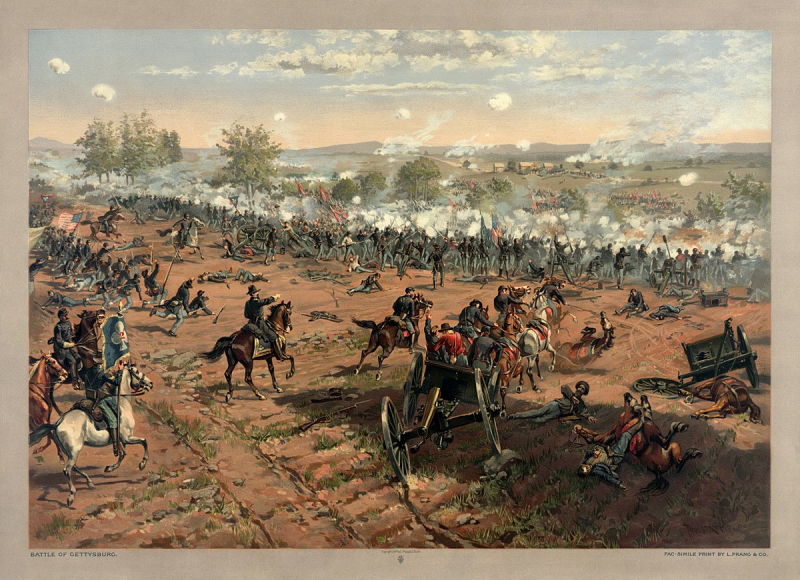
en.wikipedia.org 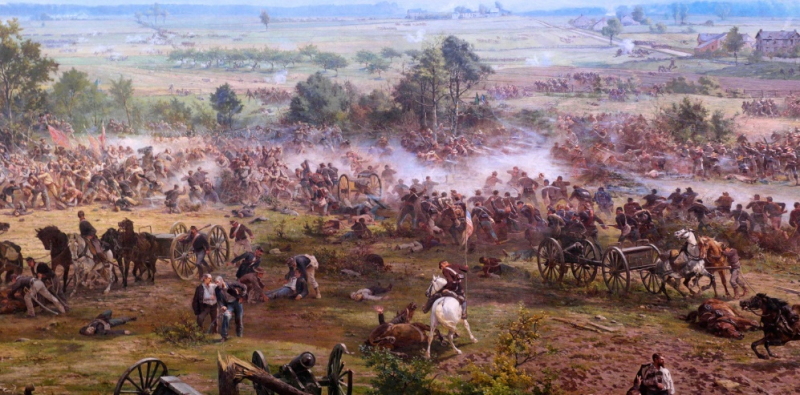
kids.nationalgeographic.com -
Another fact is that Union soldiers were awarded Medals of Honor for their actions at Gettysburg. The battle claimed the most losses in the war and is widely regarded as a historic moment in the civil war. For the Gettysburg Campaign, 72 Medals of Honor were awarded. 64 of the honors were given for deeds committed during the fight, with the first being given in December 1864. Because of the nature of this medal, it is frequently, though by no means solely, awarded posthumously. President Barack Obama presented the most recent Medal of Honor for heroism at Gettysburg to Alonzo Cushing in 2014.
During the American Civil War in 1862, the Medal of Honor was established. It was and still is the highest military honor bestowed by the US government on a member of its armed services. The Gettysburg Campaign was a Civil War campaign in the United States. Between June 3 and July 24, Union and Confederate forces fought in southern Pennsylvania, Maryland, and northern Virginia. The primary and eponymous battle of the campaign was the Battle of Gettysburg. The honorees must have distinguished themselves above and above the call of duty in combat against an enemy of the United States. The award criteria have evolved over time, and the current criteria do not correspond to those used for Civil War prizes.
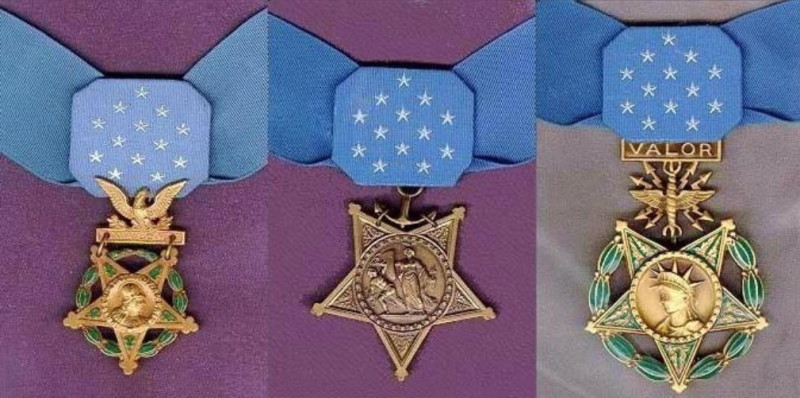
The Medals of Honor -en.wikipedia.org 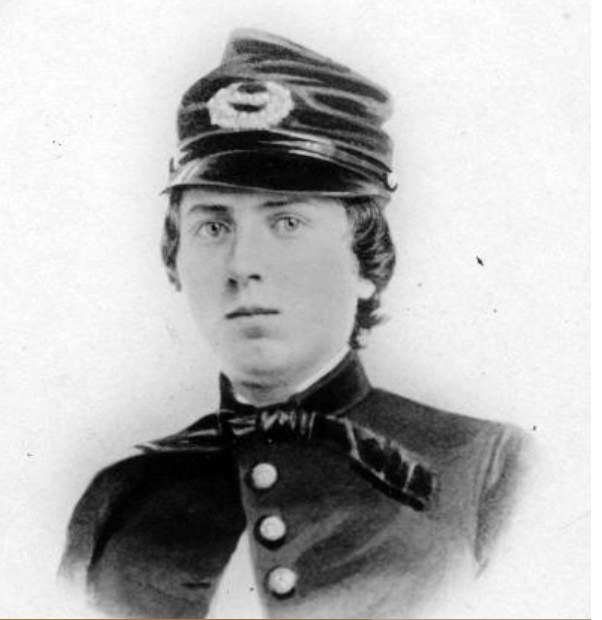
Alonzo H. Cushing -en.wikipedia.org -
It is a fact that due to the Union's decisive victory, the fight is often evaluated as the war's turning point. The nature of the outcome of the Battle of Gettysburg has been a source of contention. Although not viewed as very momentous at the time, especially given that the war had lasted almost two years, it has sometimes been described as a watershed moment in history, generally in conjunction with the fall of Vicksburg the next day. This is based on the observation that Lee's army made no additional strategic offensives after Gettysburg, as well as the Lost Cause writers' speculative belief that a Confederate triumph at Gettysburg would have resulted in the war's end.
It is unarguable that Lee's onslaught on July 3 was forcefully pushed back, and his campaign in Pennsylvania was prematurely ended, while Confederates at the time contended that this was a temporary setback and that the campaign's goals were mostly completed. Gettysburg was dubbed a "strategic disaster for the Confederacy" by David J. Eicher, and James M. McPherson argued that Lee and his soldiers would go on to win more honors. But they never had the power and renown that they brought into Pennsylvania that summer of 1863.
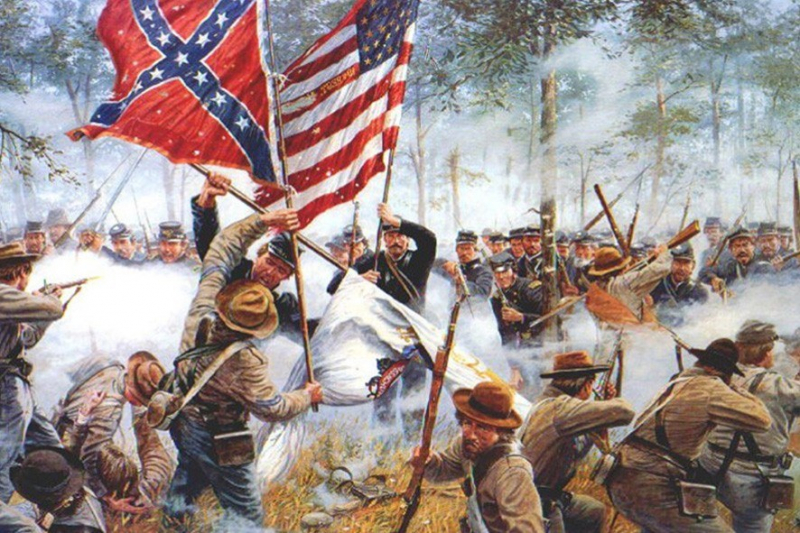
ctc.ac.uk 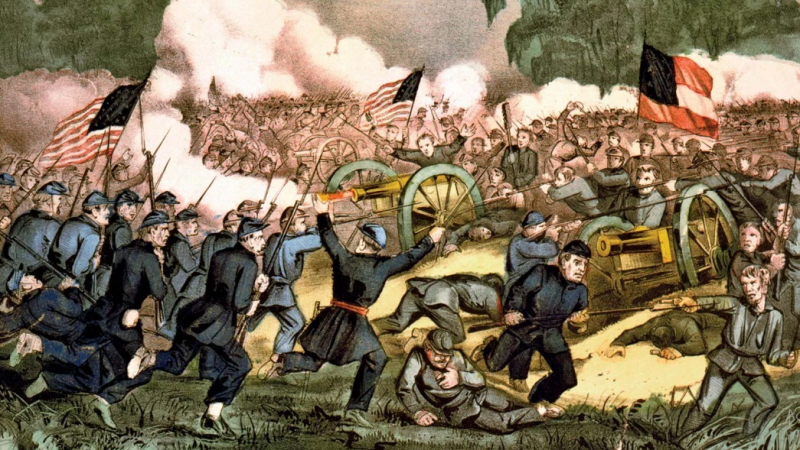
britannica.com -
Another interesting fact about the Battle of Gettysburg is that the battle proved that the seemingly invincible Lee could be defeated. Prior to Gettysburg, Robert E. Lee had earned a reputation as an almost invincible general, gaining surprising triumphs against superior forces, albeit at a tremendous cost to his army, during the Seven Days, Northern Virginia Campaign, Fredericksburg, and Chancellorsville. The key elements in Lee's defeat, according to some, were his overconfidence in his men's invincibility; the performance of his subordinates, and his administration of them; his declining health; and the performance of his opponent, George G. Meade, and the Army of the Potomac.
The performance of Lee's subordinates is one of the most contentious aspects of the war. Lee's senior generals failed him in critical ways, resulting in the battle's loss; an alternative viewpoint is that Lee did not manage his subordinates adequately, and thus did not compensate for their shortcomings. Two of his corps commanders, Richard S. Ewell and A.P. Hill, had only recently been promoted and were unfamiliar with Lee's command style, in which he provided only general objectives and guidance to their former commander, Stonewall Jackson, which Jackson translated into detailed, specific orders to his division commanders. During the campaign and battle, all four of Lee's major commanders faced criticism.
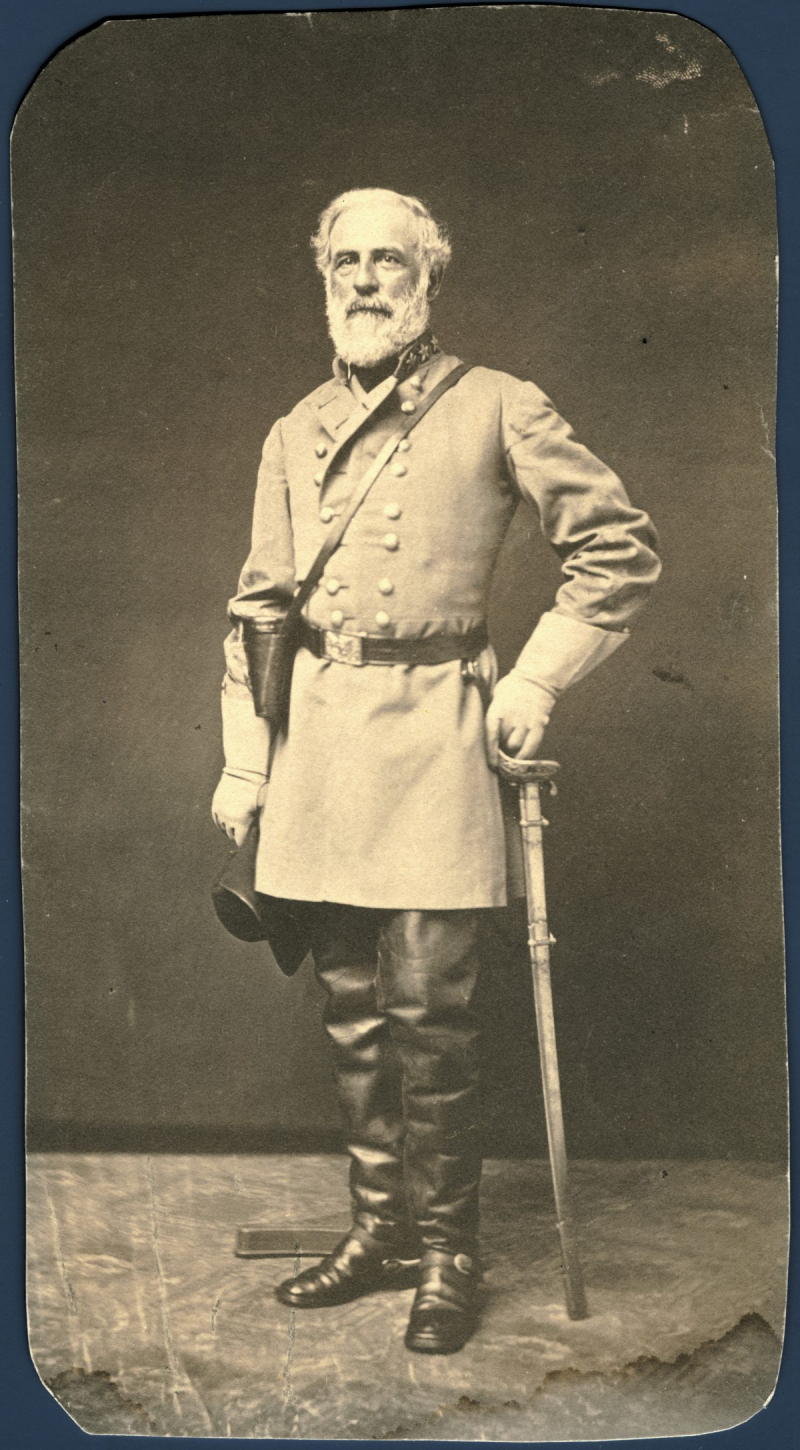
Gen. Robert E. Lee -en.wikipedia.org 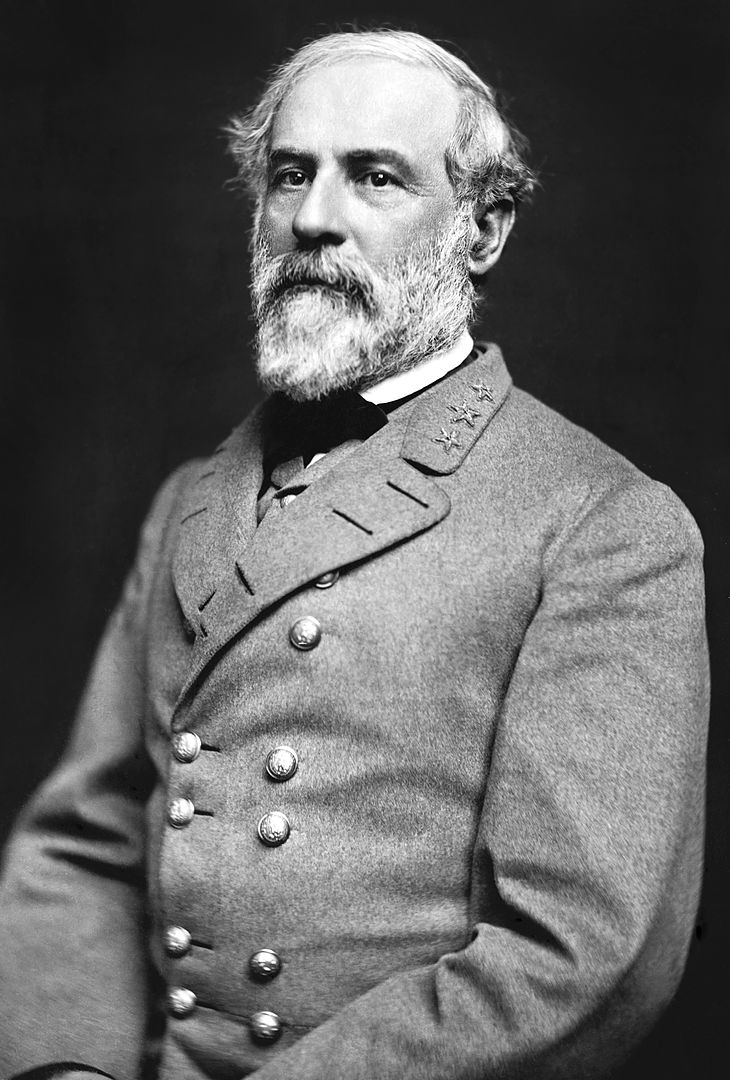
Gen. Robert E. Lee -encyclopediavirginia.org










